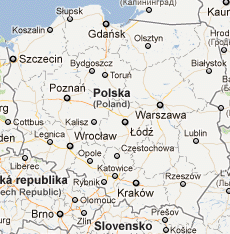News

E-Light Magneti Marelli acknowledged as an Eco-Innovation
- 01.04.2014The European Union has recognised the LED E-Light technology manufactured by Magneti Marelli Automotive Lightning as an Eco-Innovation for automobiles.
E-Light LED lights manufactured by Magneti Marelli Automotive Lightning allow lower power consumption required for lightning, thus reducing the total energy consumption in the vehicle. The E-Light module uses about 1/6 of the energy of a traditional halogen light bulb and can reduce CO2 emission by approximately 1g/km.
The technology implemented in the module of low beam E-Light LED lights has been officially acknowledged as innovative and effective in reducing carbon dioxide emission produced by cars, which is an important goal for the European Union. The official decision of the European Commission supports the introduction of the E-Light LED low beam module manufactured by Magneti Marelli Automotive Lightning. The regulations in force within the EU aim at a gradual reduction in CO2 emissions, starting from a limit of 130 g CO2/km in 2015, down to 95 g CO2/km in 2020, with sanctions applied to each gram over this limit.

As from 2012, if the average CO2 emissions of vehicles manufactured by a carmaker exceed the limit value set by the legislator, the carmaker will be required to pay a fine for each registered vehicle that does not meet the quota. This fine amounts to € 5 for the first g/km over the permissible limit, € 15 for the second g/km over the limit, € 25 for the third g/km over the limit, up to € 95 for all subsequent g/km over the limit. Beginning from 2019, the fine will amount to € 95 as for the first gram.
The European Union's Eco-Innovations is a project aiming at supporting and promoting solutions and technologies in line with the objectives of sustainable development and allowing to obtain ecological improvements, together with those related to the gradual reduction of greenhouse gas emissions, including carbon dioxide emitted by vehicles.
Suppliers and manufacturers have the opportunity to reduce CO2 emission, total share of which cannot exceed 7 g CO2/km through the use of innovative technology.
The innovation of the E-Light LED low beam module lies in the use of a lower number of light diode sources and the simultaneous use of lenses that refract the emitted light.
During the analysis and certification of this new solution, the parameters of the E-Light module have been compared to the parameters of halogen light bulbs. The difference is evident at first glance. The low-beam E-Light LED uses 11 watts compared to 68 watts consumed by a regular halogen light bulb with superior performance in terms of lightning power.
E-Light LEDs can be used in newly developed models of vehicles, and within the promotion of this technology, the credit of 1g CO2/km will be acknowledged for the model that adopts this solution already at the design phase.
“The decision taken by the European Commission is very important for us, - said Eugenio Razelli, CEO of Magneti Marelli -in the context of the regulatory framework for the reduction of vehicle CO2 `emissions as of 2020, because it actually confirms the efficiency of the LED technology developed by Magneti Marelli Automotive Lighting."
"E-Light technology acknowledged by the EU as an Eco-Innovation - Razelli continues - is a classic win-win solution. It gives the carmakers potential savings resulting from the reduction of CO2 emissions in manufactured vehicles but it is also interesting for the final client, especially from the standpoint of safety, reliability and lower fuel consumption, not to mention the design.
LED technology is a true revolution in the lightning industry, not only in the automotive sector. In order to implement it in automobiles, one must have the appropriate skills to add LEDs to the electronic systems, ensuring reliable and optimal operation.
The use of traditional halogen lamps will gradually decrease in automobiles too: they are already gone from some full-LED headlamps, replaced by electronically activated luminous diodes".
The evolution of lightning technologies which derives from LED and Xenon solutions, with the 35-Watt configuration and the new 25-Watt solution has opened up new possibilities in the area of safety, reduction of energy consumption and reduction of CO2 emissions, at the same time offering new design possibilities.
The most recent solutions in the lighting area for sure are the "full-LED" solutions, with future development of this technology postulating all mechanical functions involved in pointing the light beam to be replaced by electronic functions that allow controlling the direction of the beam through luminous intensity of the LED emitted light. Automotive Lighting is already producing completely electronic full-LED headlamps.
Some of the most important, global innovations in the technological evolution car lightning sector have been initiated in Automotive Lightning, first Xenon headlights in 1991, Xenon dynamic curve light in 2003 and the first Infrared headlamp in 2005.
The true revolution in lightning technology has happened already in 2008, as Automotive Lightning has launched the mass production of the world's first full-LED headlamp (for Audi R8). It was the first headlamp equipped with an active infrared night vision system, and in 2010 the first full-LED headlamp with adaptive functions has been developed (for Mercedes CLS).
With a turnover that accounts for over € 2 billion of Magneti Marelli's total turnover of € 6 billion, and an annual production of approximately 22 million headlamps and 22 million lights, Automotive Lighting represents one of the main areas of Magneti Marelli's business perimeter, as well as one of the major players at the global level in the lighting sector.
Automotive lighting is currently has 23 facilities located in 15 countries such as: Brazil, Czech Republic, China, France, Germany, Japan, India, Italy, Malaysia, Mexico, Poland, Russia, Spain, Turkey and the U.S. Its Research & Development centres are located in Europe (Germany and Italy) and in the United States.
Milano, 1 April 2014














